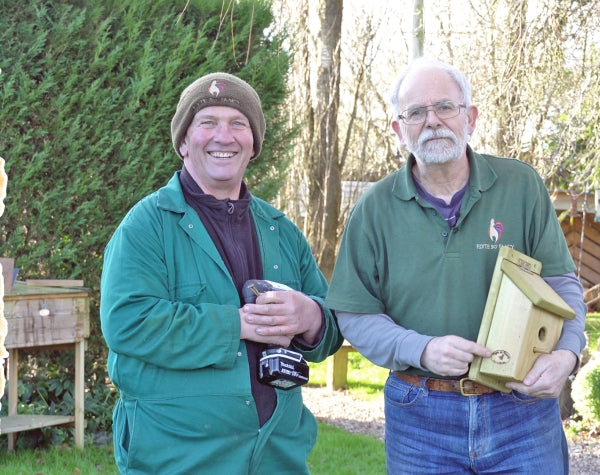Create a Safe Haven for Garden Birds by Installing Nesting Boxes
Flyte so Fancy's very own bird lover, Phill, takes you through our range of Garden Bird Nest Boxes, who they suit and how to install them (featuring Rob the Gardener).
Over the last few decades, many wild bird species have struggled with habitat loss, so providing them with a safe place to nest can make a big difference. It's important to place the bird box in a suitable location, such as a tree or a post, and to keep it clean and well-maintained to ensure the birds' comfort and safety (Note - do not disturb bird nests during nesting season, it is illegal to disturb an occupied nest box).
Our Flyte so Fancy Bird Boxes are handmade from 20mm thick close-grain timber. We use untreated Swedish Redwood, sustainably sourced from a Certified supplier. We want to ensure that they are built to last and provide a safe and secure environment for birds to thrive.
With so many natural habitats vanishing from the countryside today, being able to place purpose-made boxes can be their saviour. Setting up your nesting boxes at the right time of year will encourage wild birds to nest and breed so that you may help increase the wild bird population in your garden.
7 Top Tips to make your garden a haven for Birds
1. Provide a regular food source - Offer bird seeds, suet cakes, or mealworms in a bird feeder or on a bird table. Make sure to refill the feeder consistently, especially during winter months.
2. Provide fresh water - Birds need water for drinking and bathing so providing a shallow bird bath is vital.
3. Provide suitable nesting sites - Install purpose-made nesting boxes made of natural materials and place them in a quiet and sheltered location.
4. Provide a variety of habitats - Plant a variety of shrubs and trees to provide food, shelter, and nesting sites for birds.
5. Reduce potential dangers - Minimise threats from domestic cats by placing bird feeders and baths out of their reach.
6. Keep feeders clean - Regularly clean and disinfect bird feeders and baths to prevent the spread of disease.
7. Avoid pesticides - Pesticides can be harmful to birds, so consider using natural alternatives or avoiding them altogether.
For more information about garden birds, their size, habitats and breeding habits visit our Garden Birdwatch page.
The 10 most endangered Garden Birds in the UK
According to the RSPB’s Red List for 2022 there are now 70 species on the endangered List, this has doubled since 1997. Most recently added are the Swift, Greenfinch and House Martin.
In no particular order ...
1. Song Thrush
2. Fieldfare
3. Common Starling
4. House Sparrow
5. Greenfinch
6. Cuckoo
7. Swift
8. Bullfinch
9. Long-tailed Tit
10. House Martin
All Red List Birds are facing different levels of endangerment and some species have declined significantly in recent decades due to habitat loss, disease, and other factors like changing agricultural methods. The RSPB and BTO are leading the efforts to protect and conserve them.
To learn more about the different status levels of endangered birds visit the RSPB website UK Conservation Status Explained.



